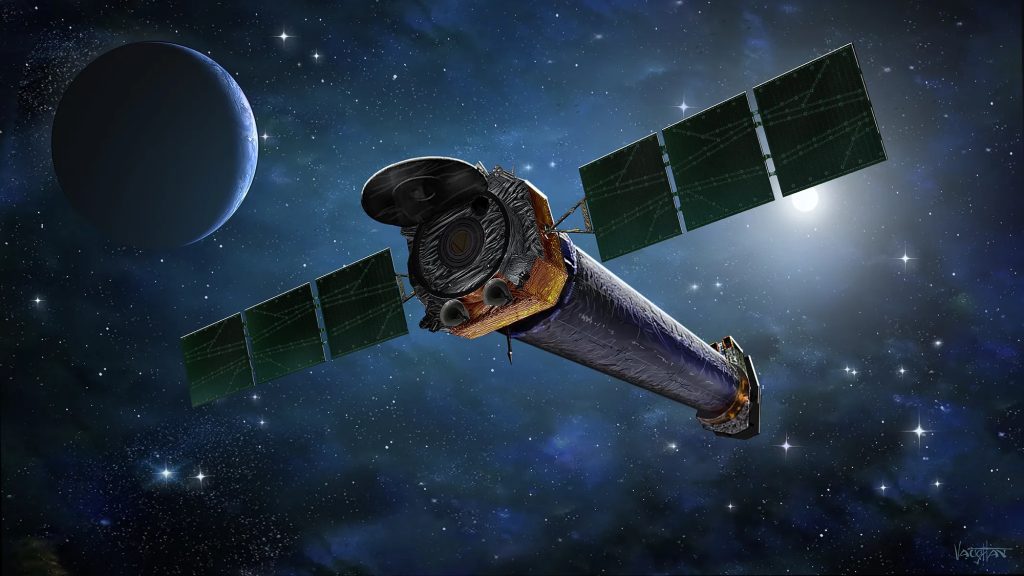WASHINGTON — Astronomers are opposing NASA's plans to decrease the funding for two well-established space telescopes. They argue that reducing the budget for one of them could put the future of X-ray astronomy in the United States at risk.
NASA has put forward a budget proposal for the fiscal year 2025, which was released on March 11,, suggesting decreasing the operating budgets of two original “Great Observatories” space telescopes. The proposal suggests a slight reduction in the budget for the Hubble Space Telescope, from $98.3 million in the final fiscal year 2024 spending bill to $88.9 million.
The budget cuts for the Chandra X-Ray Observatory, however, are more substantial. The mission, which received $68.3 million in 2023, would see a 40% budget cut to $41.1 million in the request. The proposal also forecasts further reductions after 2026, dropping to just $5.2 million by fiscal year 2029.
In the budget request, NASA argued that Chandra’s performance has been deteriorating over time. “This makes scheduling and the post processing of data more complex, increasing mission management costs beyond what NASA can currently afford,” the budget proposal stated. “The reduction to Chandra will start orderly mission drawdown to minimal operations.”
Astronomers strongly disagree with this portrayal of the nearly 25-year-old spacecraft. In a statement on March 19, open letter, Patrick Slane, director of the Chandra X-Ray Center, pointed out that the mission has been dealing with issues like rising temperatures for many years, and has incorporated measures to address them into existing operations and software. Consequently, he concluded, “there is nothing about Chandra’s changing temperature behavior that makes ‘post processing of data more complex.’”
He argued that the budget proposal would lead to a “closeout” of the mission rather than reduced operations. “The funding levels provided in the new budget plan are consistent with levels for these closeout activities, but lower than can accommodate operation of the Chandra science mission; the minimal operations referred to in the budget document would actually be decommissioning activities.”
At a meeting on March 20 of NASA’s Astrophysics Advisory Committee, or APAC, agency officials defended the suggested cuts, stating that overall budget pressures are leading them to find ways to decrease the costs of operating both Chandra and Hubble.
“We don’t want to cancel Chandra,” said Nicola Fox, NASA associate administrator for science, at the meeting. “What we’re looking for is more efficient ways of operating these missions so we can continue them moving forward.”
NASA is planning to hold what officials have referred to as a “mini senior review” to explore ways to operate both missions with smaller budgets. “Are there ways we can maintain scientific productivity with significantly different operating budgets?” said Mark Clampin, astrophysics director at NASA Headquarters, at the APAC meeting. “We cannot, with the budget that we have right now in ’25 or the outyears, fund these missions at the level they’ve been funded at in the past.”
The effort is officially called an Operations Paradigm Change Review, and it will be handled differently than traditional senior reviews that determine whether spacecraft past their primary mission should be extended. Eric Smith, associate director for research and analysis in NASA’s astrophysics division, said at the meeting that this review is driven by a schedule that requires it to be completed by the end of May to support planning for the agency’s fiscal year 2026 budget request.
He stated that the missions will need to propose ways to operate Chandra and Hubble that fit within the funding profile in the budget proposal. However, they will also have the opportunity to present options with different funding requirements.
“The budgets require that these missions operate differently than they have in the past. There will be impacts on scientific research,” he acknowledged. “I don’t believe we’re under any illusion that the budgets in place will allow things to continue as they have been.”
This could entail, for example, switching off some instruments. “Do we want to continue operating a near-IR camera on Hubble in the age of Webb?” Clampin offered as a hypothetical example of the trades the missions and the review panel will contemplate.
He said that analysis is best conducted by the review panel and the missions themselves, as they are most knowledgeable about the capabilities of the telescopes and the scientific research they can carry out. “We simply don’t have time to conduct a large, widespread poll of the science community,” he said.
However, both members of APAC and others in a public comment period expressed concerns about the effects of the proposed cuts on both missions, particularly Chandra, which some argued could significantly impact X-ray astronomy in general.
Dave Pooley of Trinity University, a member of the Chandra Users’ Committee, pointed out that X-ray astronomers in the U.S. depend on Chandra funding for their research. “Sudden budget cuts of this scale send a signal that X-ray astrophysics in the U.S. is in an extremely precarious situation,” he said. “It is unclear how and if X-ray astrophysics in the U.S. will survive these cuts.”









